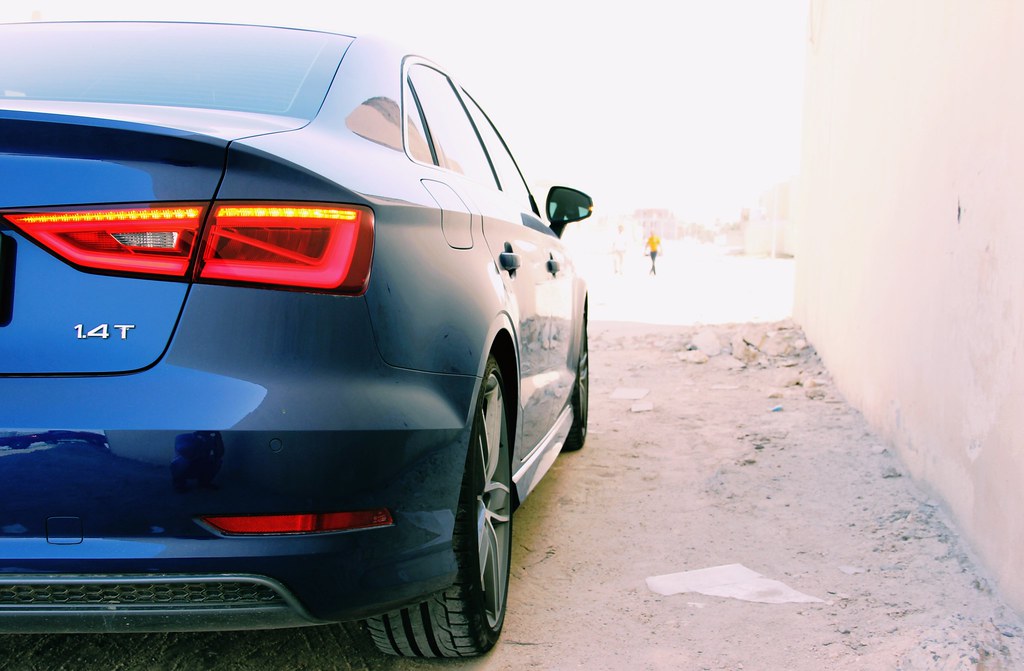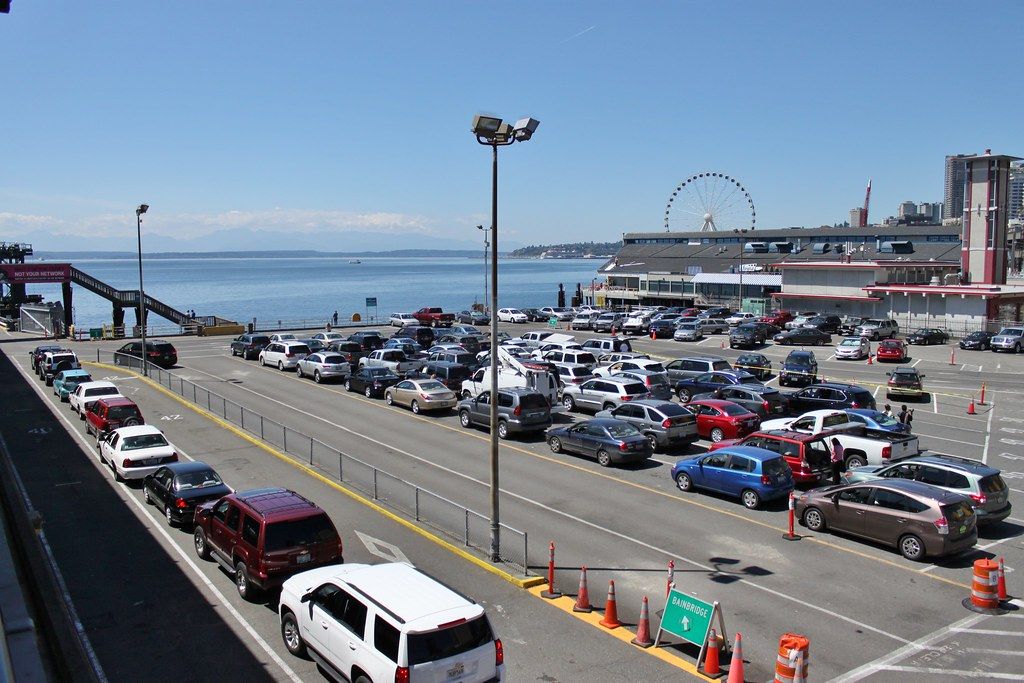
The frequent sight of drivers changing lanes or turning without signaling has become a major frustration on roads. Despite being legally mandated in most U.S. states, the turn signal is often ignored, contributing to countless near misses and collisions. This widespread neglect is more than just an annoyance; it represents a significant safety oversight with grave implications for everyone on the road.
While reliable statistics on turn signal use are sparse, existing data paints a concerning picture. Estimates suggest U.S. and Canadian drivers fail to signal turns at intersections roughly 25 percent of the time. Lane changes are worse, with one study showing drivers failed to signal 48 percent of the time in Dayton, Ohio. These figures translate to billions of un-signaled maneuvers annually, potentially causing more accidents than distracted driving.
This article deeply explores the complex factors behind this hazardous habit, examining the psychological, environmental, and behavioral reasons drivers bypass this essential communication tool. Understanding these root causes is crucial for promoting safer driving practices and reducing preventable accidents on our increasingly busy roadways.

1. **The “No One’s Around” Miscalculation**A common and dangerously flawed rationalization drivers use for not signaling is the belief that “nobody’s around.” A quick glance in the mirrors, revealing no immediate vehicles, often leads to the conclusion that a turn signal is unnecessary. This deduction, however, critically fails to assess the broader scope of road safety and the true, communicative purpose of signaling.
John Sullivan of the University of Michigan Transportation Research Institute confirms drivers tend to behave better in heavier traffic. His 2014 study found significantly less signaling on local neighborhood roads compared to major or minor surface roads. Drivers are “almost five times more likely to signal on a major or minor surface road than on a local road,” underscoring the misguided belief that less traffic automatically means less risk.
This assumption of safety on local and rural roads is incorrect. Car insurer Esurance reports more accidents occur within 25 miles of home, and more fatal crashes happen on rural country roads than in busy urban areas. The signal isn’t just for the car directly behind; it’s a broadcast to everyone, including cyclists, pedestrians, or cars in blind spots. Overlooking these elements makes this miscalculation a dangerous gamble.
2. **Psychological Factors: Cognitive Overload & Forgetfulness**Understanding why drivers neglect signals often involves looking into their mental state and cognitive processes. Driving, especially in heavy traffic or unfamiliar areas, is mentally demanding. The brain processes immense information: road signs, GPS, other cars’ speeds, hazards, pedestrians, and in-car distractions. This is known as cognitive load.
When mental bandwidth is maxed out, the brain prioritizes. Critical actions like braking or steering take precedence. Non-critical, secondary actions, such as using a turn signal, can get pushed aside. This isn’t intentional negligence; rather, the brain has triaged the turn signal as a low-priority task, a phenomenon dubbed the “Too Busy to Blink” phenomenon.
Beyond situational overload, plain old forgetfulness and ingrained habits play a significant role. If signaling wasn’t rigorously enforced during learning, it might never become an unconscious habit. It remains a conscious action, easily forgotten. On daily commutes, drivers often go on autopilot, making the same turns without conscious thought. Forgetting to signal can then become part of that automatic routine.

3. **The Contagion Effect & Group Mentality**Driver behavior can be influenced by others, leading to a “contagion effect” for both good and bad signaling habits. Harold Faw’s 2013 study in British Columbia examined this at busy intersections. He found that “The signal use rate for drivers following a vehicle with its signals on was approximately 6 percent higher than the rate for drivers following a vehicle not using signals.”
This demonstrates that drivers, consciously or subconsciously, model the behaviors observed around them. This effect can help explain regional differences, such as the widely noted tendency for Californian drivers to neglect signals, humorously described as “vestigial organs” by Hamish Reid. Social influence, even subtle, can powerfully shape road habits.
Another aspect of group mentality appears when drivers are at the back of a line in dedicated turn lanes. Faw’s research showed drivers closely following a car were 7 percent less likely to signal a right turn. The assumption is often: “everybody already knows where I’m going, so what’s the point?” This overlooks pedestrians or other road users who may not infer intent, potentially leading to dangerous situations.

4. **Perceived Low Risk Situations: Right Turns & Turn-Only Lanes**Perceived risk significantly influences a driver’s decision to signal. Less dangerous maneuvers often see neglected signals, particularly right turns versus left turns, and in “turn-only” lanes where intent is presumed obvious.
Drivers are more diligent about signaling left turns, with Faw’s 2013 study noting 94.8 percent compliance in dedicated lanes. This logic is sound: left turns involve greater hazards, requiring alerts for following traffic and opposing traffic. In multi-way intersections, especially with pedestrians, advance notice is universally beneficial.
Right turns, however, are often viewed as “downright boring” and less perilous, leading to lower signaling rates. Pickup trucks, for instance, showed only a 74 percent signal rate for right turns in Faw’s study. This perceived lower risk doesn’t negate the legal requirement; an officer can still issue a ticket for failing to indicate.
Similarly, in “turn-only” lanes, many drivers believe signaling is redundant: “The lane is turning, so obviously I’m turning.” While the logic is understandable, most traffic laws, as affirmed by the New Hampshire Supreme Court, still mandate a signal. This is crucial because pedestrians and vehicles from other directions may not infer your intent, forcing dangerous guesswork.

5. **Entitlement & Reckless Driving**A more disturbing reason for neglected turn signals stems from a driver’s attitude, often manifesting as entitlement or reckless behavior. Some drivers operate with “Main Character Syndrome,” believing their actions are obvious and others should anticipate their moves. They see the road as “their space,” expecting reactions rather than communicating intentions.
This mindset often correlates with aggressive driving behaviors like tailgating or weaving through traffic. For these individuals, signaling is a courtesy they don’t feel obligated to extend, asserting indifference or dominance on the road over communal safety.
Shockingly, a 2006 Response Insurance survey revealed 7 percent of respondents didn’t signal because it “adds excitement to driving.” These drivers, observed weaving through traffic like “Mario Andretti-wannabes,” treat highways as a thrill-seeking arena rather than a means of safe transport. This dangerous thrill-seeking directly contradicts the signal’s purpose. As engineer Richard Ponziani states, “A seatbelt saves you when you’re in a crash, but a turn signal is crash prevention.” This highlights the tragedy of neglecting a powerful, simple safety device for perceived “excitement.”
Read more about: Brace Yourself! These 13 Cars Have the Most Infamous Bad Driver Reps on the Road

6. **Practical & Mechanical Barriers**Not all neglected signals are psychological; practical and mechanical factors also contribute. One long-standing issue is the perceived inconvenience of turn signals, particularly their disengagement. Turn signal technology, largely unchanged since the 1940s, relies on a mechanical switch that often fails to disengage reliably during lane changes or gradual merges.
This mechanical imperfection leads to the frustrating sight of vehicles “signaling left for the past 47 miles.” This annoyance discourages use: a 2006 Response Insurance survey found 17 percent of non-signalers cited “forgetting to turn it off” as a reason. This friction point in user experience genuinely discourages consistent signal use.
Beyond inconvenience, a broken turn signal is a fundamental mechanical issue. A burnt-out bulb or blown fuse can go unnoticed for days or weeks, especially by less car-savvy drivers. “Hyperflashing” (a faster dashboard indicator light) is a key sign of a burnt-out bulb. Without a functional signal, drivers cannot effectively communicate intent.
Finally, in-car technology and its distractions play a growing role. Modern cars, with complex infotainment, navigation, and connectivity, can divert attention at critical moments. Adjusting GPS, changing music, or climate controls can be just enough distraction for a driver to forget signaling before a turn or lane change.
Read more about: The Unsung Hero in Your Trunk: Why a Crowbar is Your Car’s Most Essential Emergency Tool

7. **The Undeniable Legal Mandate**Perhaps the most straightforward reason for using turn signals is its legal requirement. This is not a suggestion but a law in every U.S. state. While specific wording and advance signaling distances vary, the core principle is universal: signaling intentions before turning or changing lanes is a legal obligation for safe vehicle operation.
State requirements illustrate this, often specifying distances. California, Texas, New York, and Florida all mandate signaling continuously for at least 100 feet before a turn or lane change. New York also requires visibility from 500 feet on the highway. The consistent message across these diverse legal frameworks is clear and unambiguous.
This legal imperative isn’t arbitrary; it underpins road safety by standardizing communication and creating predictable traffic flow. Consistent use allows other drivers, pedestrians, and cyclists to anticipate maneuvers, adjust speeds, and maintain safe distances, preventing collisions. When a driver fails to signal, they are not only breaking the law but actively undermining this critical safety system.
The consequences extend beyond immediate accident risk. Failure to signal can lead to traffic tickets and points on a driving record. More significantly, in a collision, the absence of a signal can be decisive in determining fault, leading to severe financial repercussions. Adhering to this legal requirement is therefore a fundamental commitment to responsible and safe driving.
Read more about: Beyond the Badge: Uncovering the Hidden Flaws in 14 Fan-Favorite Vehicle Models

8. **The Legal & Financial Fallout: Tickets, Insurance Hikes, and At-Fault Accidents**Beyond the immediate annoyance and safety risks, the failure to signal carries tangible legal and financial consequences for drivers. A citation for ‘failure to signal’ is not a minor slap on the wrist; depending on the state and specific circumstances, these tickets can range anywhere from $50 to over $200. It’s a direct monetary penalty that underscores the legal seriousness of the infraction, yet many drivers still overlook its importance.
These tickets are more than just a one-time fine. They often come with points on your driving record, which are a red flag for insurance companies. Insurers closely monitor these points, and an accumulation can lead to a significant increase in your monthly or annual premiums. This hike isn’t temporary; it can persist for several years, making the initial decision to skip a signal far more costly in the long run than most drivers realize.
The most severe financial risk, however, lies in accident liability. If you are involved in a collision and it’s determined you failed to signal before a lane change or turn, you will almost certainly be found 100% at fault for the accident. This determination can have catastrophic financial repercussions, from covering your own vehicle damage to the other party’s medical bills, property damage, and legal fees. An at-fault accident on your record can cause your insurance rates to skyrocket or even lead to your policy being non-renewed entirely.
Ultimately, adhering to the simple act of signaling is a fundamental commitment to responsible driving, protecting not only lives but also your financial well-being. It’s a small action that can prevent a cascade of costly and stressful outcomes, emphasizing why this legal requirement is so rigorously enforced.

9. **The Grave Danger to Pedestrians**While much of the discussion around turn signal neglect focuses on vehicle-to-vehicle interactions, the consequences extend critically to the most vulnerable road users: pedestrians. People crossing the street can do everything right—looking left, right, and every other way—but if a driver makes an un-signaled turn, pedestrians are left with no warning and minimal time to react, often forcing them into dangerous situations or direct impact.
Pedestrian accidents and injuries caused by un-signaled drivers most frequently take place at crosswalks and other places designated for pedestrian crossings. Drivers, often focused solely on vehicle traffic, may entirely miss or dismiss the presence of pedestrians, especially when failing to communicate their intentions. This oversight transforms a common intersection into a hazardous zone, where pedestrians are forced to guess a vehicle’s path, a gamble that can prove fatal.
The injuries sustained by pedestrians in such collisions are often severe and life-altering. They commonly include fractures, traumatic brain injury (TBI), and spinal injuries. Broken legs, hips, and other fractures are regrettably common. Unlike drivers and passengers, who are at least somewhat protected by a car’s body and safety features, pedestrians have no protective barrier against the blunt force of an impacting car or truck.
The profound disparity in protection underscores why turn signals are so vital. They are not merely a courtesy to other vehicles; they are a critical communication tool for everyone sharing the road. Neglecting them actively endangers lives, turning simple maneuvers into potential tragedies for those on foot.
Read more about: Unlock Safer Driving: 6 Critical Ways Your Phone Habits (and Others) Are Putting You at Risk – And How to Master the Road

10. **The Exaggerated Risks with Commercial Trucks**Sharing the road with large commercial trucks, such as tractor-trailers or semis, demands an elevated level of vigilance and communication from all drivers. The inherent characteristics of these massive vehicles—their larger size, immense cargo, numerous blind spots, and extended stopping distances—magnify the catastrophic consequences of any collision. When a driver fails to signal around a truck, the risks are exponentially higher.
Large trucks simply cannot slow down, stop, or change lanes with the same agility or speed as a smaller passenger car. Their momentum and weight require significantly more time and distance to execute any maneuver safely. If a car driver makes an unexpected move, such as an unsignaled lane change or turn, the truck driver may not be able to react in enough time to avoid a collision, even if they are paying full attention.
This reality makes the consistent use of turn signals absolutely crucial when driving near commercial vehicles. Signaling well in advance allows truck drivers, who are constantly scanning for potential hazards, the precious seconds they need to adjust their speed, position, or brake to accommodate your actions. Without this vital communication, even a minor misjudgment from a passenger vehicle can lead to a severe accident with devastating outcomes.
Therefore, making it a habit to always use your turn signal, particularly when maneuvering around trucks, is not just a courtesy—it’s a fundamental safety practice. It reduces uncertainty, fosters predictability, and dramatically lowers the risk of a collision that could have far-reaching and tragic consequences for everyone involved.

11. **The SMOG Check: A Pro Driver’s Essential Technique**To ensure every lane change is executed safely and proficiently, professional drivers often employ a simple yet highly effective mental checklist known as the SMOG check. This acronym serves as a potent reminder to perform all the critical safety steps consistently, making it an invaluable tool for any driver seeking to improve their road awareness and reduce accident risk during merges and lane shifts.
Here’s how the SMOG technique works, starting with the very first and most crucial step: **S – Signal.** Your blinker should be activated to indicate your intention to move *before* you even begin to check for openings. This early communication is paramount, informing surrounding traffic of your upcoming maneuver and allowing them time to react. Following the signal, you proceed to **M – Mirrors**, where you diligently check your rearview and side mirrors to assess the traffic situation in the target lane and behind you.
The next step, **O – Over-the-shoulder**, is arguably the most critical and, unfortunately, the one most often missed by drivers. After checking your mirrors, a quick but thorough glance over your shoulder into the blind spot in the direction you intend to move is non-negotiable. Modern mirrors significantly reduce blind spots, but they do not eliminate them entirely, making this physical head check vital for spotting vehicles that may be hidden from mirror view.
Finally, once you have signaled, checked your mirrors, and confirmed your blind spot is clear with an over-the-shoulder glance, you can confidently **G – Go**. Make a smooth, gradual move into the next lane, avoiding sudden jerks or aggressive acceleration. This systematic approach ensures that you have comprehensively evaluated your surroundings and communicated your intentions, making your lane changes as safe and predictable as possible for yourself and others on the road.

12. **Defensive Driving: Navigating the Non-Signaler’s World**As frustrating as it is to encounter drivers who neglect their turn signals, you cannot control the actions of others on the road. What you can control, however, is your own reaction and preparedness. Adopting a defensive driving mindset is your most potent strategy for staying safe and mitigating risks when navigating around those who fail to communicate their intentions.
One of the simplest yet most effective defensive tactics is to increase your following distance. Leaving more space between your vehicle and the car in front gives you crucial extra time to react if they suddenly brake or make an unsignaled turn. Another keen observation technique is to watch the wheels of vehicles at intersections or in adjacent lanes; a car’s tires will often start to turn slightly before the vehicle itself begins its maneuver, providing a subtle but early clue about their intentions.
Beyond just watching the vehicle, observing the driver’s head movements can offer significant insights. If you can see the driver, watch their head—a driver looking over their shoulder is a huge indicator that they are about to change lanes. In uncertain situations, such as approaching an intersection where a driver might make an unexpected move or driving alongside someone who is drifting, practice ‘covering your brake’ by resting your foot over the brake pedal without pressing it. This dramatically reduces your reaction time if an immediate stop becomes necessary.
The golden rule of defensive driving, especially around non-signalers, is to assume nothing. Assume the car in front of you might turn without signaling; assume the car waiting at a junction might pull out in front of you. This state of mindful awareness and proactive anticipation is your best defense against the unpredictable behaviors of others. By consistently applying these strategies, you can significantly enhance your safety and reduce the stress of navigating our increasingly busy roadways.
## Conclusion
While the sight of drivers neglecting their turn signals remains a top frustration for motorists everywhere, this widespread oversight is rarely born from pure malice. Instead, it’s a deeply human problem, rooted in a complex interplay of psychology, ingrained habits, and flawed risk assessment. However, the consequences—ranging from costly traffic tickets and skyrocketing insurance premiums to catastrophic, at-fault accidents and severe injuries, especially for vulnerable pedestrians and occupants of other vehicles—are undeniably real and severe.
Ultimately, using a turn signal is one of the simplest, most effective, and legally mandated forms of communication we have on the road. It’s a small, instantaneous act that costs nothing but yields immense benefits by fostering a safer, more predictable, and less stressful environment for everyone. By understanding the reasons behind this neglect, recognizing its profound impact, and adopting proactive strategies like the SMOG check and defensive driving, we empower ourselves to navigate the roads more safely. It’s time to make signaling an unwavering habit—let’s make our roads safer, one blinker at a time.




